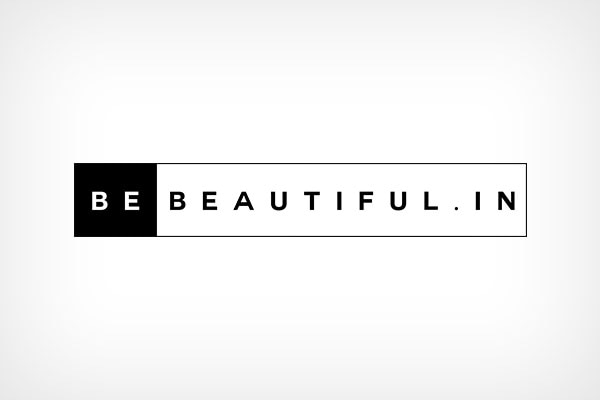Check out this guide on what are blemishes and how to prevent them from occurring on your face.

If you enjoy socialising but hide from the world because you’re self conscious about blemishes, then here's how you can fix it. The blemishes that appear on the face are the most frustrating, aren't they? Well, now you won't have to worry about eliminating those embarrassing blemishes because we got you covered! Read on to find out what are blemishes on face and how to get rid of them.
What are blemishes on face?
Blemishes are any marks, spots or discolourations on the skin. While their sight may affect your confidence, blemishes on the face are usually not harmful or life-threatening. They may, however, be signs of skin cancer in some cases. Learn about the different types of blemishes and how they can be treated below.
Types of blemishes
Any type of skin mark is considered a blemish. They can be of various types.
Acne
Acne is one of the most common blemishes and can appear in the form of:
Pimples
Whiteheads
Blackheads
Acne results from clogged hair follicles due to sebum, dirt, or bacteria. In some cases, acne leaves pockmarks, dark marks or scars on the skin.
Acne may be caused by hormonal changes. Although it's not considered a root cause of acne, stress can make acne worse by increasing the production of sebum.

Hyperpigmentation
Dark patches or an uneven skin tone can result from excessive melanin production. Hyperpigmentation can be caused by:
Acne scarring
Hormonal changes during pregnancy
Sun exposure
You can also use the Lakme Absolute Perfect Radiance Brightening Serum to reduce pigmentation and brighten your skin. Apply the serum twice daily after cleansing your skin and you will notice your pigmentation reducing gradually.

Scars
When the dermis layer is damaged, the skin is scarred. There are capillaries (small blood vessels), sweat glands, hair follicles and nerve endings deep within the dermis. Scarring can result from anything that breaks the skin, such as a popped pimple or wound.

Papules
The term papule refers to a variety of small skin lesions. Their size is typically about 1 centimetre. These lesions are typically pink or brown in colour. Occasionally, pimples may be referred to as papules. They can come in any shape and may occur individually or in clusters. Among the different forms of papules are:
Eczema
Psoriasis
Dermatitis
Chickenpox rashes
Shingles

Nodules
A nodule is a collection of tissue. They're usually 1 to 2 centimetres in diameter, and harder to touch than papules. Nodules can appear at any level of the skin. They can be flesh-coloured or red in colour. Examples of nodules include skin tags and warts.

Pustules
Pustules are bumps that are filled with fluid or pus. Pustules can be whiteheads or chickenpox blisters. Scabies and rosacea are other conditions that can cause pustules, which are characterized by redness and visible blood vessels.

Age spots or liver spots
Sun exposure can result in these small, dark spots forming anywhere on the body. People over 50 are more likely to develop them, but younger people can also be affected. Age spots are a form of hyperpigmentation.

Ingrown hair
When you wax, tweeze, or shave your hair, you may develop ingrown hairs. An ingrown hair grows back into the skin and becomes trapped. As a result, a red bump forms. Ingrown hairs may be more common in curly hair than in straight hair.
A large, fluid-filled ingrown hair cyst can also develop as a result of ingrown hairs. These cysts can appear red, white, or yellow. They may be painful or uncomfortable to touch.

Birthmarks
Typically, birthmarks appear at or soon after birth. Their size, form, and colour may vary. A mole or port-wine stain is a type of birthmark that lasts for life. Others, such as salmon patches and hemangiomas, fade with time.

Cysts
Cysts come in many different types. Here are some examples:
Sebaceous cysts
Ganglion cysts
Epidermoid cysts
A cyst is a benign (noncancerous) sac that contains fluid. They can appear as bumps of differing sizes under the skin or on the surface, and are often round.
How to get rid of blemishes on face
The best way to get rid of blemishes on face is to prevent them. Listed below are some helpful tips and measures to prevent blemishes on the face.
Practice healthy hygiene : The first step to preventing blemishes is to practice good hygiene. Prior to bedtime, make sure to clean your face thoroughly. Be sure to change your pillowcases and sheets every week to prevent bacterial infections.
Use a sunscreen – Protecting your skin from the sun is essential if you want to avoid sunspots. To protect yourself from UVA and UVB rays, use a broad-spectrum sunscreen, such as Dermalogica Powerbright Face Moisturiser SPF 50 With Sunscreen. It not only protects your skin against the harmful rays of sun, but also prevents dark spots, reduces uneven pigmentation, and evens out your skin tone.

Make changes in your diet: Keeping your skin healthy and free of blemishes is possible if you eat a diet rich in vitamin C and E. Also, refrain from consuming dairy products that can aggravate acne.
The right skin care routine: Stick to the skincare routine recommended by your dermatologist or according to your skin type. Additionally, avoid pore-clogging skin care and makeup products that contain comedogenic ingredients.
Hydration: Drinking about 3 liters of water a day will ensure that your skin is fully hydrated and flushed of toxins, preventing skin blemishes.
Regularly exfoliate your skin: Keep pores clean by exfoliating the skin regularly. The best face scrubs for blemishes are those that contain anti-bacterial agents, such as Simple Daily Skin Detox Clear Pore Facial Scrub. It contains thyme, zinc and witch hazel that help eliminate pore-clogging dirt, oil and makeup to leave your skin purified.

Avoid touching your face all the time: If you have bumps on the face, resist the urge to touch your face all the time. This may spread the blemishes even further.
FAQs
What are the differences between acne and blemishes?
In acne, pimples, blackheads, and whiteheads are visible on the skin. Blemishes decolorize the skin. Blemishes and acne are two different types of skin conditions. However, blemishes can occur as a result of acne.
How can I get rid of blemishes on face at home?
Blemishes can be removed with a little tomato juice or lemon juice applied to the affected area. Additionally, moisturizing the area with natural ingredients like honey and aloe vera gel helps improve the texture of your skin over time.
When should I see a dermatologist for blemishes?
If a blemish causes psychological distress or a person wishes to treat it for cosmetic reasons, a dermatologist may be consulted. If a person develops a skin blemish that appears to have any of the following characteristics, they should consult their dermatologist immediately.
The blemish grows quickly
It changes in shape, size, and colour
The blemish itches or bleeds
















 Privacy Notice
Privacy Notice
Written by Kinnari Ashar on 27th Jun 2022